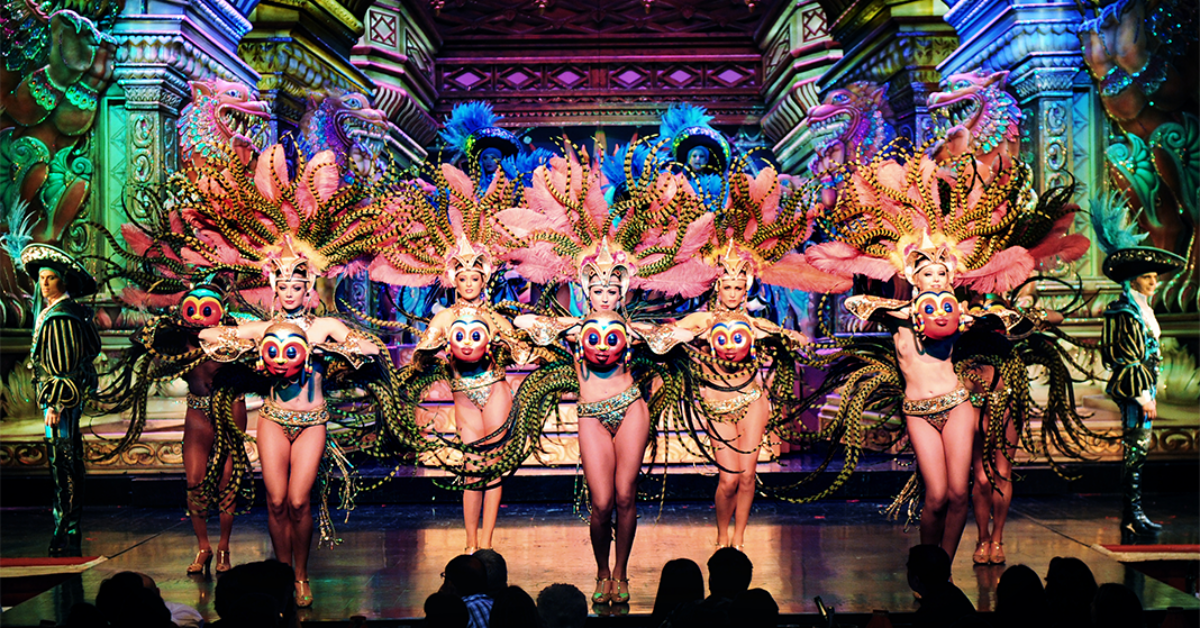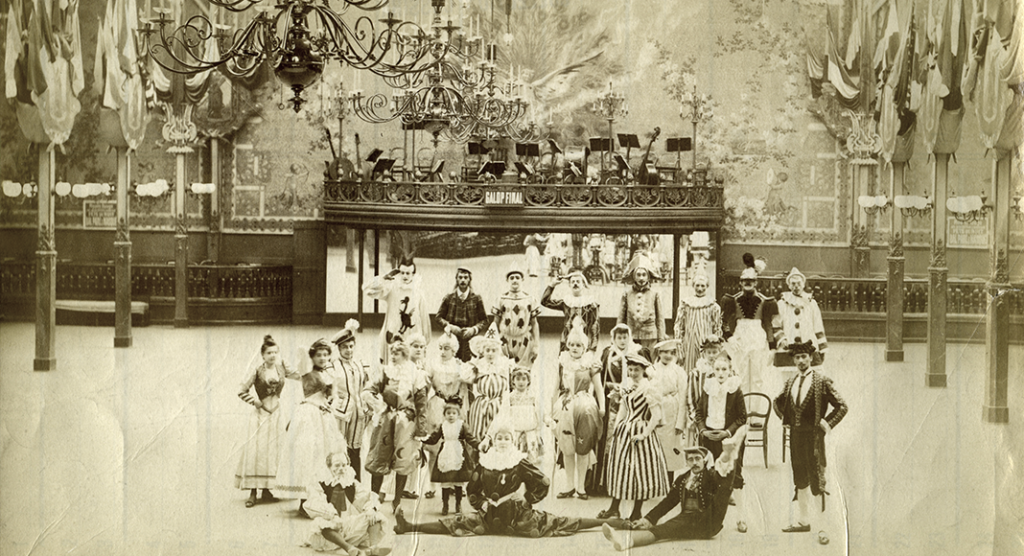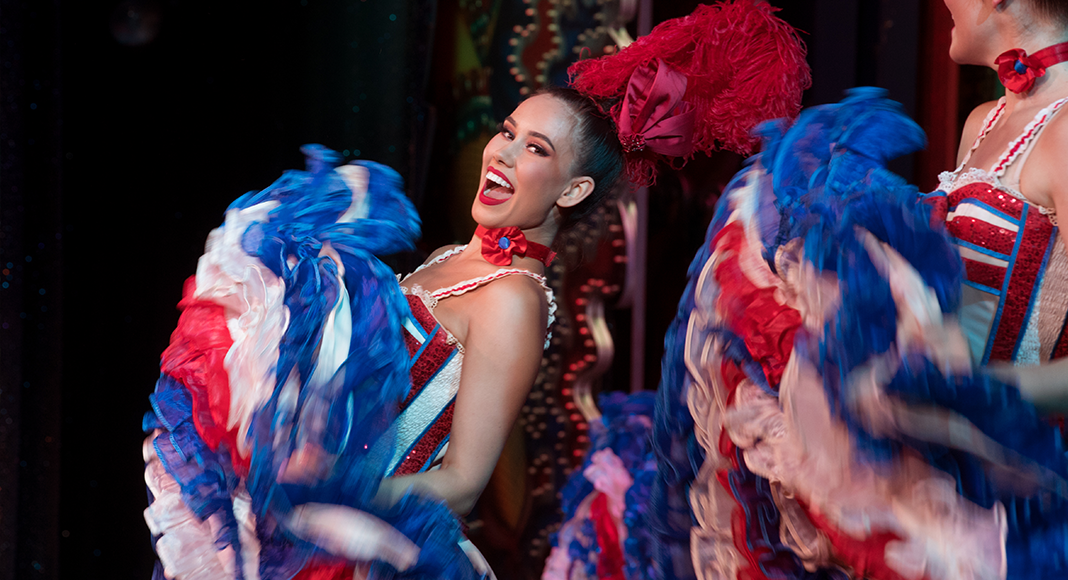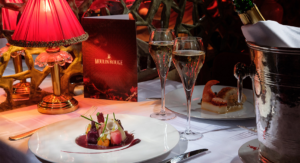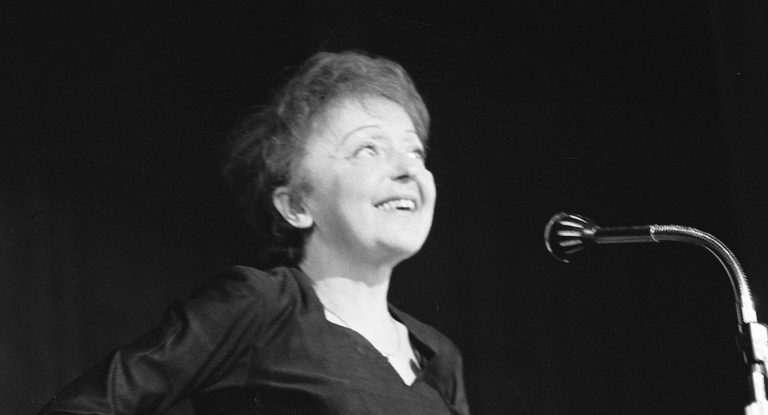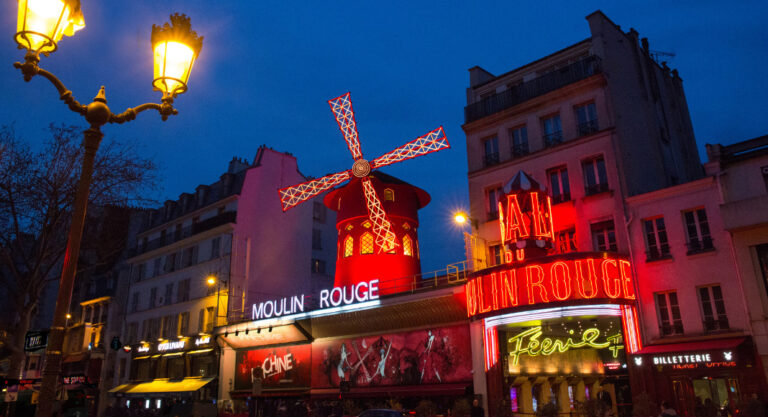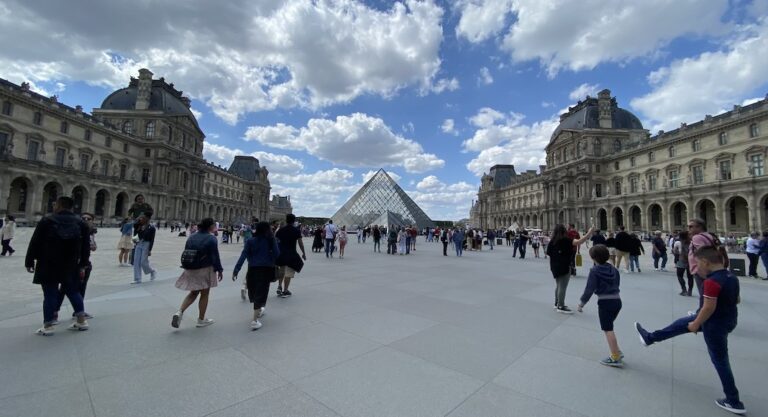One hundred and thirty years ago on October 6, 1889, the Moulin Rouge opened, and Paris hasn’t been the same since. It’s made dances and dancers famous, been extensively depicted in art — paintings, films, music — more than any other cabaret, and brought smiles to the faces of the tens of millions who have passed through its doors. The Moulin Rouge boasts an international reputation, a rich history, and top-notch performances; how did it become the most famous cabaret in the world?
The Moulin Rouge began with an audacious bet that it would become “the palace of dance and women” that was “more luxurious, bigger and more elegant” than any other location at the time. Success came fast thanks to a dance that debuted on opening night: the French cancan, previously known as the quadrille. Revolutionary movements, screams, boisterous rhythms decorated by frills and flowing skirts that were scandalously lifted to show the young dancers’ legs — and their underwear.
The dance was revolutionary, and so were the dancers. By day, the dancers worked as washerwomen, linen maids and seamstresses, and by night they became the famous cancan dancers. Soon they were the toast of the town as people from all walks of life came to see them. La Goulue, the muse of Henri Toulouse-Lautrec, was perhaps the most famous dancer. Not only did she immortalize the French cancan, she had spunk too: in 1890, the Prince of Wales, the future Edward VII, came to the famous dance at the Moulin Rouge. Leg in the air, head in her skirts, she recognized him and called out, “Hey, Wales, the Champagne’s on you!”
Besides putting dancers in the spotlight, the Moulin Rouge itself stayed in the spotlight by being ahead of the curve. After closing in 1902, it reopened as a concert theatre. The writer Colette performed the operetta “Rêve d’Égypte” there, which was so controversial it caused a near-riot. The genre of cabaret show as we know it today was born there with Mistinguett, a bubbly French actor and singer who first performed at the Moulin Rouge in 1907. For 27 years, Mistinguett thrilled audiences, writing original songs that became all-time classics, like “Ça, c’est Paris.” The Moulin Rouge couldn’t stay the same for long though, so in 1937 it became a night club in an ultra-modern move for the time. In 1951, with a new auditorium decorated in Belle-Epoque style by Henri Mahé, the dance hall pivoted to big-time shows. The first revue, Frou-Frou, in 1963, was such a smash that all subsequent shows have been titled with the letter F to keep the successful streak going.
After so many years hosting famous performers and giving rise to an iconic dance, the Moulin Rouge became a status symbol for artists, like performing at Carnegie Hall in the United States. Edith Piaf, Yves Montand, Dean Martin, Frank Sinatra, Charles Aznavour, Lisa Minnelli, Elton John, Ray Charles, Bing Crosby, Ginger Rogers and Ella Fitzgerald have all graced the stage and contributed to the venue’s growing fame.
Being immortalized in art has helped the Moulin Rouge to secure its place in history as one of the most famous cabarets in the world. Its beginnings were linked to the visual arts: Henri Toulouse-Lautrec was recruited to create its famous posters, and Jules Chéret and Jane Avril depicted it as well. The cabaret has appeared in books, music videos, and films, like Jean Renoir’s French Cancan (1954), John Huston’s Moulin Rouge (1952) and Baz Luhrmann’s mythical movie of the same name (2001) which became a theatrical adaptation (2019).
With such an illustrious history, the Moulin Rouge could rely on its achievements to stay relevant. But, no, the production never ends — the show must go on. And it does: every day, without fail, the Moulin Rouge performs Féerie twice a night, with 60 performers on stage. The show involves a 40-ton aquarium, six horses and five pythons. The sets and costumes are handmade by French craftsman, each feather, rhinestone and sequin painstakingly applied. Quality cuisine is prepared nightly by chef David Le Quellec, whose exceptional work landed the Moulin Rouge in the Gault & Millau gastronomic guide, the first cabaret to be featured in it. The waitstaff numbers at 120, the largest brigade in France, and they serve 240,000 bottles of Champagne per year. Needless to say, the Moulin Rouge cannot be outdone when it comes to putting on a show.
Lasting so long doesn’t just require cultural relevance, it requires a commitment to artistry — the show must be exceptional, perfect every night. The Moulin Rouge has survived two world wars, a devastating fire, and periods of socio-political unrest in its 130-year history, and still today it flourishes as the most famous cabaret in the world. It sits at the base of Montmartre, under a red windmill that has been turning for the last 130 years and will continue to turn for decades to come.
Learn more about the Moulin Rouge here, and buy tickets to a show here.
–
Sponsored articles do not belong to the editorial team at Frenchly. They are provided or written at the request of the advertiser, who determines the content.

